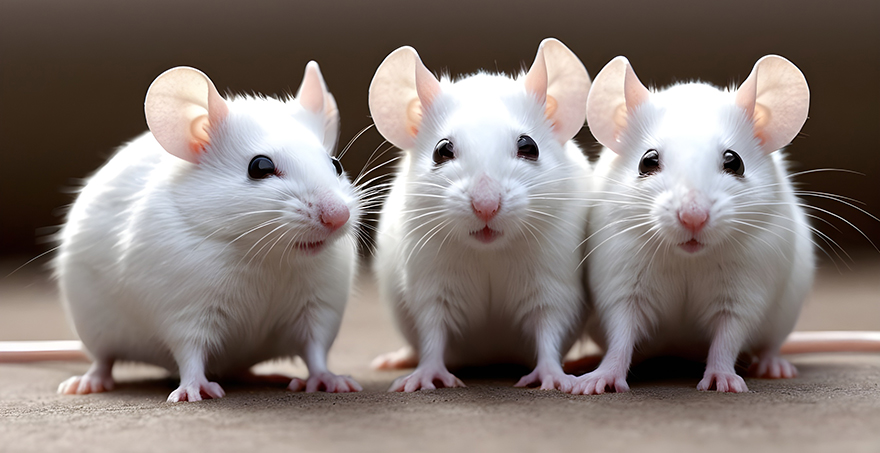Advancing Research on Autism Spectrum Disorder (ASD) on World Awareness Day

Autism Spectrum Disorder (ASD) is a complex neurodevelopmental condition that affects individuals in various ways, influencing their communication, social interaction, and behavior. Each year on the 2nd of April we celebrate World Autism Awareness Day, an occasion it's crucial to delve into the intricacies of this condition, fostering understanding and support for those living with autism.
First identified in the early 20th century, autism was initially misunderstood and often stigmatized. However, over the years, significant strides have been made in understanding and supporting individuals with autism. Today, it's recognized that autism is not a single condition but rather a spectrum encompassing a wide range of challenges and strengths.
On World Autism Awareness Day, the global community comes together to raise awareness about autism, promote acceptance, and foster inclusion. It's a day to celebrate the unique talents and contributions of individuals with autism while advocating for greater understanding and support.
In recent years, research into autism has expanded, shedding light on the underlying biological and genetic factors that contribute to the condition. Preclinical studies, conducted primarily on animal models, play a vital role in advancing our understanding of autism and developing potential treatments.
Ugo Basile offers two main devices used in studies on autism: the Three-chamber sociability apparatus and the Agora Maze - SocioBox method. These tools enable researchers to investigate social behavior, cognitive function, and sensory processing in animal models of autism.
Behavioural experiment with Ugo Basile three-chamber sociability apparatus
The Three-chamber sociability apparatus is a widely used tool in preclinical research on autism. This apparatus allows researchers to assess social behavior in rodents by observing their interactions with unfamiliar conspecifics. By measuring parameters such as social approach, social preference, and social novelty, researchers can gain insights into the social deficits associated with autism-like behaviors.
In elucidating the complex interplay between genetics and social behavior, researchers often rely on sophisticated behavioral assays to dissect the underlying mechanisms. One such tool, the three-chamber sociability test developed by Ugo Basile, emerges as a cornerstone in studying sociability in preclinical models.
This behavioral test provides a robust framework for assessing social interactions and preferences in rodents, offering valuable insights into the neurobiological basis of social behavior. The apparatus consists of three interconnected chambers, allowing for the simultaneous evaluation of sociability, social novelty preference, and general exploratory behavior.
After a period of habituation, the test subject is placed in the central chamber, with two adjoining chambers containing either an empty enclosure or a conspecific (social stimulus). The subject sociability is determined by measuring the time spent by the freely-moving subject in the proximity of the grid enclosures containing the first unfamiliar (stranger) mouse or rat. A second stranger is then introduced in the box within its enclosure and the preference for the new mouse/rat can be easily assessed.
Crucially, the three-chamber sociability test enables researchers to distinguish between sociability and preference for social novelty. By introducing a novel social stimulus in one of the chambers during the subsequent phase, investigators can assess the subject's propensity for social exploration versus social novelty preference.
The versatility of this paradigm extends to various experimental manipulations, including genetic modifications, pharmacological interventions, and environmental manipulations. Researchers leverage this flexibility to elucidate the neural circuits, neurotransmitter systems, and genetic factors underlying social behavior and its dysregulation in neurodevelopmental disorders.
In this context the open access research article “GTF2I dosage regulates neuronal differentiation and social behavior in 7q11.23 neurodevelopmental disorders” highlight the critical role of GTF2I in neuronal differentiation and social behavior, providing valuable insights into the pathophysiology of neurodevelopmental disorders. By unraveling the intricate molecular mechanisms governing social behavior, this study opens new avenues for therapeutic interventions and personalized treatments for individuals affected by WS, Dup7, and related conditions.

Overall, the three-chamber sociability test by Ugo Basile represents a cornerstone in behavioral neuroscience, facilitating the comprehensive investigation of social behavior in preclinical models. Its application in the study of neurodevelopmental disorders underscores its significance in unraveling the intricate mechanisms governing social behavior and fostering translational research aimed at developing targeted interventions for these conditions.
Learn more on Ugo Basile Three-chamber Sociability Test Apparatus
The Agora Maze: SocioBox method to Assess Complex Social Recognition in Mice
Another innovative tool offered by Ugo Basile for studying autism-like behaviors is the Agora Maze - SocioBox method. This apparatus allows researchers to assess social interaction and communication in rodents within a controlled environment, by monitoring how a mouse with free movement spends its time in a central arena area with stimulus animals (familiar/unfamiliar/dominant/different gender) positioned in chambers on the outer edge.
The SocioBox method was originally developed to address the limited availability of reliable tools assessing complex social functions. The method is described by Krueger-Burg et al., in a 2016 paper “The SocioBox: a Novel Paradigm to Assess Complex Social Recognition in Male Mice”. The paradigm studied how readily an experimental mouse could identify an unfamiliar mouse among 5 newly acquainted animals.
The research presents an innovative method, the SocioBox, designed to evaluate complex social recognition in male mice. The paper addresses a critical need for reliable and nuanced behavioral assays to study social cognition, particularly relevant to autism spectrum disorder (ASD) research where social deficits are central.
The SocioBox apparatus consists of a five-chamber setup with adjustable partitions, enabling controlled interactions between test mice and stimulus mice. This configuration facilitates the assessment of various social behaviors, including social recognition, preference, and discrimination, with a higher level of complexity and experimental flexibility compared to the standard 3-chamber.
The methodological framework involves several key steps. First, mice are habituated to the apparatus to minimize novelty-induced stress responses. Subsequently, test mice are exposed to stimulus mice, either familiar or novel, in controlled conditions. Behavioral parameters such as sniffing duration, social approach, and interaction patterns are recorded and analyzed.
The paper highlights the significance of the SocioBox in addressing limitations of existing assays. Traditional paradigms often focus on simple social behaviors, lacking the capacity to capture the intricacies of social recognition and discrimination.
In the context of autism research, the SocioBox holds immense promise. ASD is characterized by profound deficits in social interaction and communication, making it crucial to develop refined tools for studying social cognition in animal models. The SocioBox provides researchers with a sophisticated platform to investigate the underlying mechanisms of social recognition impairments observed in ASD.
One key benefit of the SocioBox is its ability to assess complex social behaviors, mirroring the multifaceted nature of social deficits in ASD. By measuring parameters such as social memory and discrimination, researchers can gain deeper insights into the specific aspects of social cognition affected in ASD. This granularity is essential for identifying potential therapeutic targets and evaluating interventions aimed at ameliorating social impairments in ASD.
Furthermore, the SocioBox offers high reproducibility and scalability, essential features for conducting robust preclinical studies in ASD research. Its flexibility allows for customization according to experimental requirements, facilitating the investigation of diverse genetic and pharmacological manipulations relevant to ASD pathophysiology.
Overall, "The SocioBox: A Novel Paradigm to Assess Complex Social Recognition in Male Mice" represents a significant advancement in behavioral neuroscience, with profound implications for understanding social cognition and its disruptions in neurodevelopmental disorders such as autism. By providing a sophisticated yet accessible tool for investigating social recognition deficits, the SocioBox holds great potential to drive forward our understanding of ASD and inform the development of targeted interventions.
Learn more on Ugo Basile Agora Maze – SocioBox method



